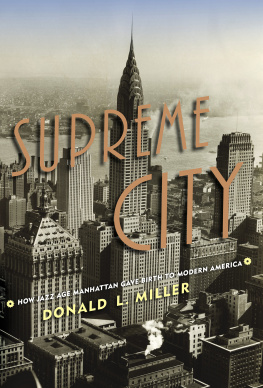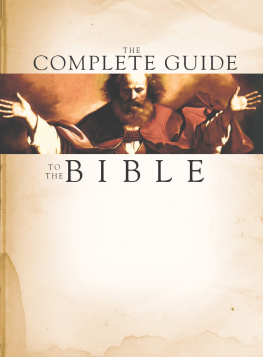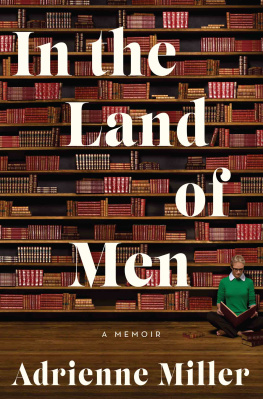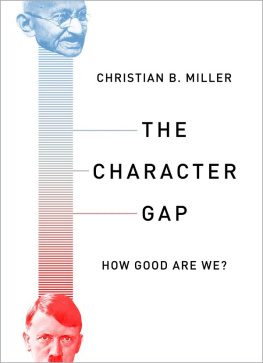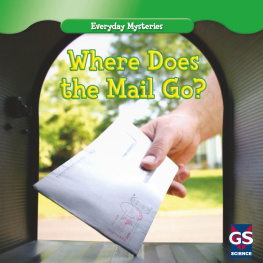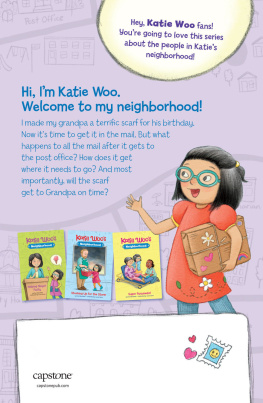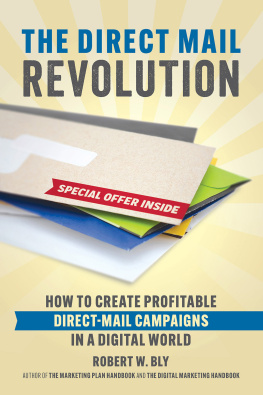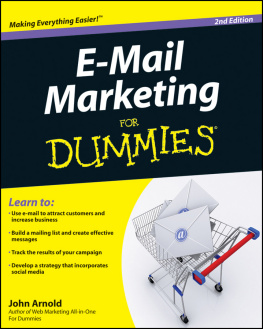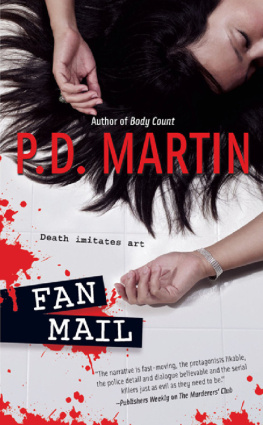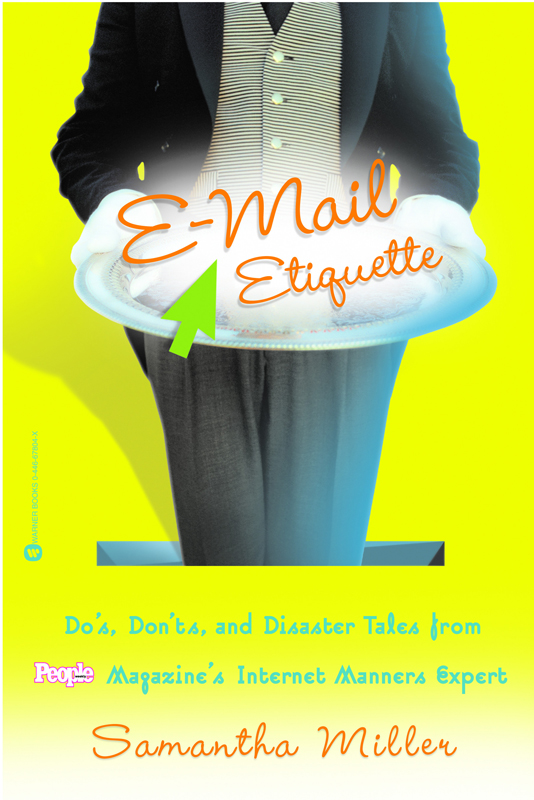E-MAIL ETIQUETTE. Copyright 2001 by Samantha Miller. All rights reserved. No part of this book may be reproduced in any form or by any electronic or mechanical means, including information storage and retrieval systems, without permission in writing from the publisher, except by a reviewer who may quote brief passages in a review.
Warner Books
Hachette Book Group,
237 Park Avenue,
New York, NY 10017
Visit our website at www.HachetteBookGroup.com.
ISBN: 978-0-7595-2639-6
First eBook Edition: November 2001
The Warner Books name and logo are trademarks of Hachette Book Group, Inc.
First, I owe terabytes of thanks to the e-mailersfrom high-tech experts and executives to accommodating friends and strangers who generously and readily dished about their pet peeves, confessed their most embarrassing gaffes, and shared their own not-so-humble opinions about etiquette dilemmas. I am grateful as well to the many experts who helped guide me through the complex technological and legal issues that relate to the topics in this book.
I am especially indebted to People magazine managing editor Carol Wallace, who gave me a great gig with the Internet Manners column and had the initial vision for this project, for her confidence and support. A big thank-you to Kyle Smith and the phenomenal Katie Hirce for their help shaping the column every week, and to my other terrific colleagues at People.
Thanks also to Amy Einhorn, Sandra Bark and the rest of the Warner Books team; to my agent, Todd Keithley, for his invaluable guidance and good humor; and to my family and friends for graciously editing draftsand for pointing out all the times my own e-mail messages were less than perfectly polite.
Finally, thank you to the People readers whose thoughtful, challenging, witty questions make writing about Internet manners such a blast.
By all rights, e-mail should be the most polite form of communication ever invented. E-mail messages dont interrupt recipients during dinner. E-mailers can take all the time they need to compose and edit notes, so there should be little danger of blurting something foolish. No one has to worry about proper stationery or poor handwriting.
E-mail makes everything easier.
Theoretically.
As more and more of us get wired, at home and at the office, what have we wound up with? As the writer of People magazines Internet Manners advice column, I can just look at the gripes in my e-mail in-box for a daily window onto the grisly scene: Friends seething about friends who forward too many chain letters. Employees grumbling about co-workers who claim to be too busy to spell-check. Frustrated e-mailers fed up with the hoaxes, scams, and spamjunk advertising e-mailclogging their in-boxes. Every day, Netizens (citizens of the Net) face a new crop of etiquette and practical dilemmas. Is it proper to send a thank-you note via e-mail? Is it a good idea to share an e-mail address with ones spouse? How formal a tone should an e-mail message to a business contact take?
How can we make e-mail live up to its promise? Thats where e-mail etiquette comes in. Dont worry, this kind of etiquette isnt about lists of arbitrary rules. You dont have to memorize how to address a viscount or where to place a fish fork. Instead, e-mail etiquette blends in roughly equal parts common sense, common courtesy, and knowledge of the Nets rules of the roadthe dictates of computer technology and the culture established by everyday users.
We all slip up sometimesand there are plenty of do as I say, not as I do directives in this book. (Just ask my friends about how I never change the subject of an e-mail message, so it reads Re: 4th of July picnic well into November.) But a good command of e-mail etiquette can go a long way toward creating better relationshipswith co-workers, with clients, with friends, with relatives, and even with significant others.
In this book, youll learn strategies for composing polite and effective personal and business e-mail, practical advice about issues such as e-mail privacy and junk e-mail, and important tips on how to guard against real Net dangers and identify hoaxes. Youll also read advice Ive given People readers whove landed in sticky e-situations.
To round things out, I asked e-mailers ranging from high-tech CEOs to grandparents to teenagers to share the e-mail etiquette infractions that drive them nuts. Youll see them sprinkled throughout the text as Net Peeves. Finally, to see the consequences of not minding ones e-manners, check out Embarrassing E-Moments: e-mail gaffes that made headlines and anonymous confessions from everyday e-mailers. These also appear throughout the book.
Is it okay to ask for a date via e-mail?
Whats the proper greeting for an e-mail message to a business client?
Are emoticonsyou know, those sideways smiley faces like :-) and :-(tacky or terrific?
Read on.
- Send e-mail that is clear, concise, and considerate of recipients needs.
- Spelling and grammar count.
- Respect your correspondents time.
- Treat e-mail you receive as private
- Never assume that e-mail you send will remain private
- Dont trust any message that reads Forward this to all your friends.
- Read the manuallearn about your e-mail programs capabilities and the technology and culture of the Net. But dont be rude to those who know less than you do.
- Take a deep breath before you hit send.
- E-mail isnt the right medium for every message.
- E-mail is the real world.
Before You Hit Send:
An E-mail
Etiquette Checklist
- Am I sending this message to the correct address?
- Have I written a useful, descriptive subject line?
- Is the messages format easy to read?
- Is the messages purpose clear?
- Have I used correct spelling and grammar?
- Is the messages tone appropriate?
- Could any statement in this message be misinterpreted?
- Is there anything in this message I wouldnt want to see posted in public?
- Am I sure e-mail is the right medium for this message?
- Am I sure this is a message the recipient will want to read?
What kinds of subject lines are best?
How should I sign an e-mail message?
Whats so bad about typing e-mail in all capital letters?
You have before you a new e-mail message. Your mission: Address it properly. Enter a useful, descriptive subject line. And craft a message thats courteous and easy to read.
What could be so hard about that? Just take a look at your inbox. Busy e-mailers often ignore common courtesies like proper spelling; beginning e-mailers often arent familiar with some of the basic rules of the road. Then there are tips and tricks few e-mailers think aboutuntil they get fed up with other users bad habits.
In this chapter, well tackle the basics of crafting an e-mail message, from To to Ta-ta for now.
An e-mail message has two sections: a header, where the addresses and subject information appear, and the body, where you type your message.
The address lines of an e-mail message:
To: Where you put the e-mail address(es) of the main person or people for whom the message is intended.
cc: Where you put the e-mail address(es) of people who should receive copies of the message. (Future


